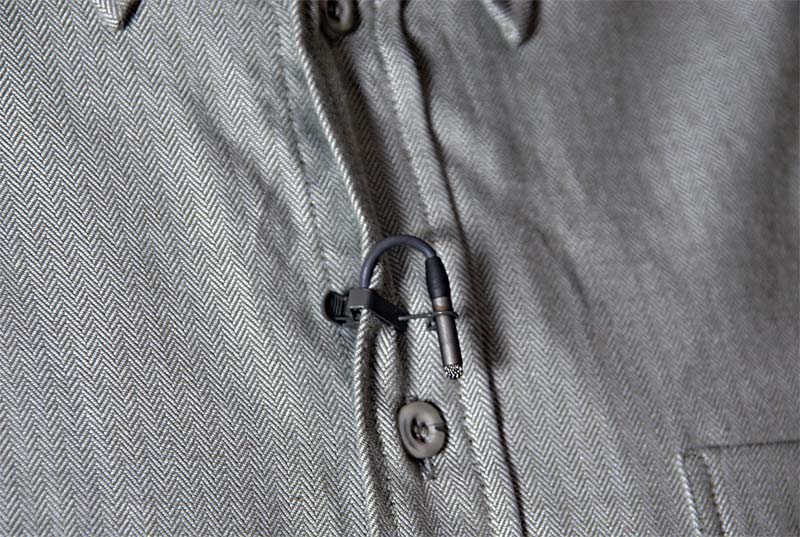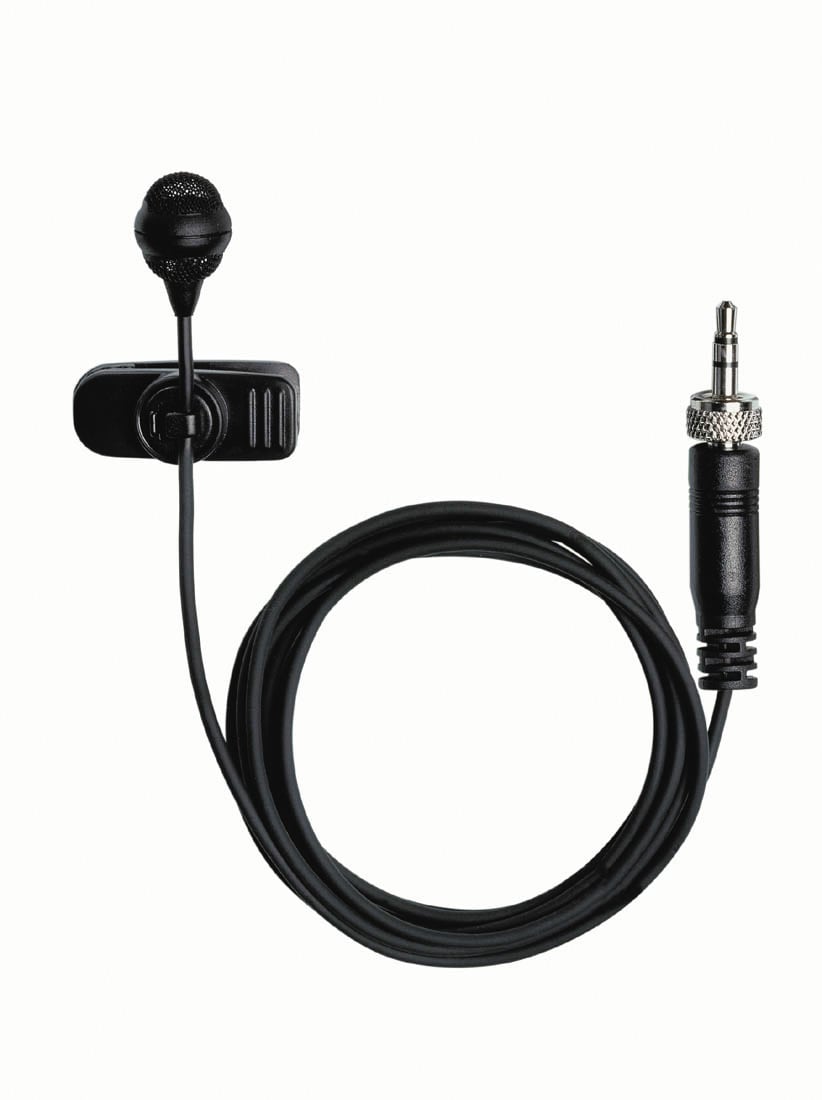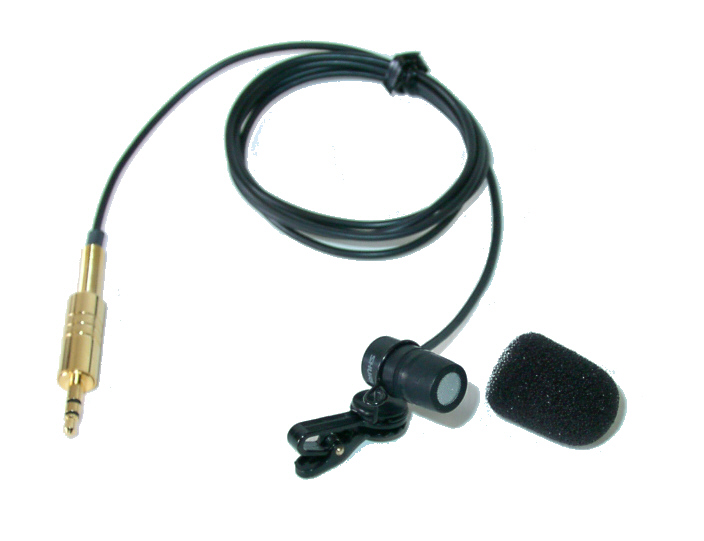Lapel microphone
A lavalier microphone or lavalier (or lav or lapel mic) is a small electret or dynamic microphone used for television, theatre, and public speaking applications, in order to allow hands-free operation. They are most commonly provided with small clips for attaching to collars, ties, or other clothing. The cord may be hidden by clothes and either run to a radio frequency transmitter or a pocket-sized digital audio recorder kept in a pocket or clipped to a belt (for mobile work), or directly to the mixer (for stationary applications).
These miniature microphones are often supplied with a choice of push-on grilles of differing lengths that provide gentle high-frequency boost by forming a resonant cavity. A peak of approximately 6 dB at 6-8 kHz is considered beneficial for compensating loss of clarity when chest-mounted, as is a peak of a few decibels at 10–15 kHz when mounted in the hair above the forehead. This method of boosting high frequencies does not worsen noise performance, as electronic equalization would do.Lapel microphones date from 1932.[1] Various models were made including ones with condensor diaphragms, ribbons, moving coils, and carbon buttons. The term referred to any small microphone that could be hooked into the buttonhole of the lapel of a coat. The lapel microphone offered freedom of movement.[2]
An early use of the microphone supported by a strap around the neck: telephone operator
The term lavalier originally referred to jewelry in the form of a pendant worn around the neck. Its use as the name of a type of microphone originates from the 1930s when various practical solutions to microphone use involved hanging the microphone from the neck. For instance, a Dictaphone microphone could be suspended on a belt around the neck in order to retain some degree of freedom of movement while recording one's voice onto a wax cylinder in 1941.[3]
















No comments:
Post a Comment